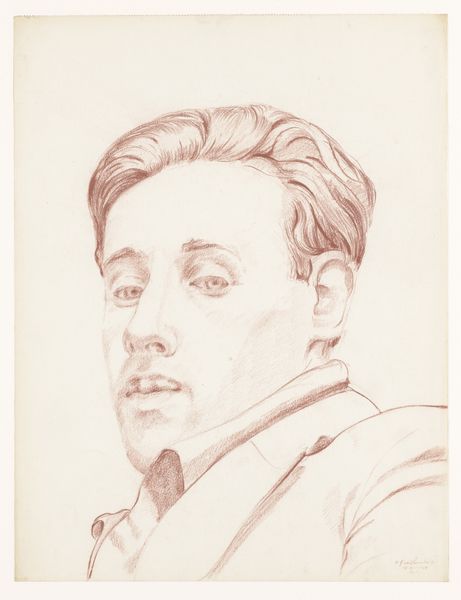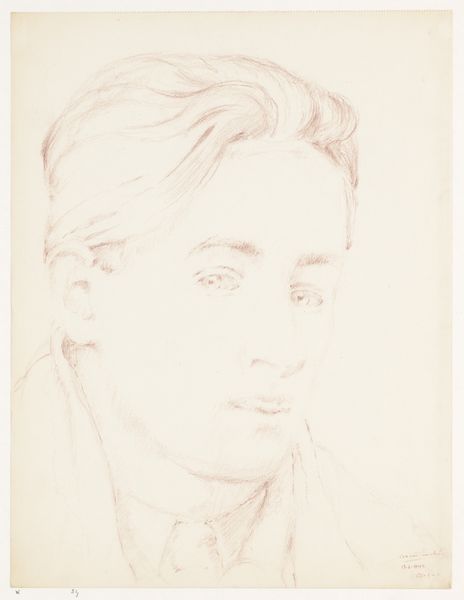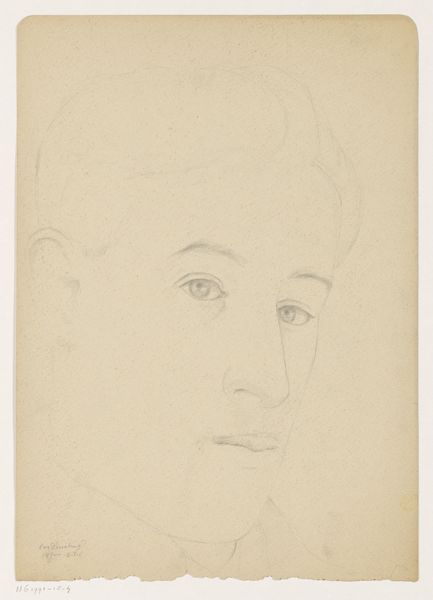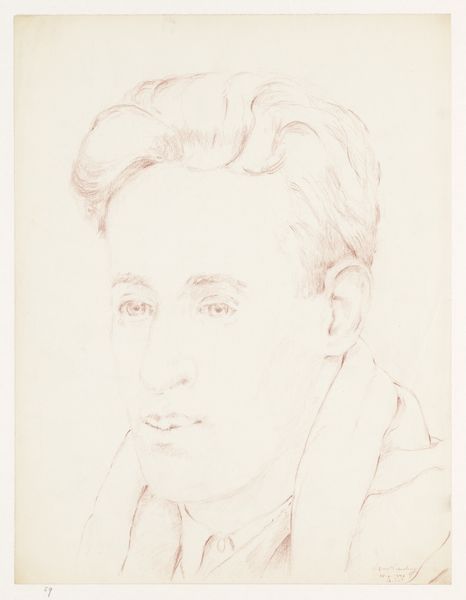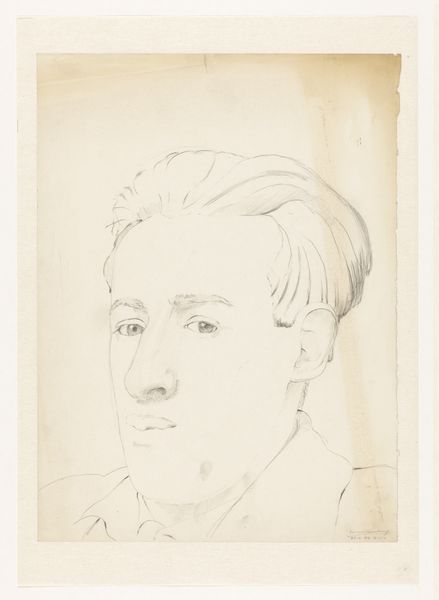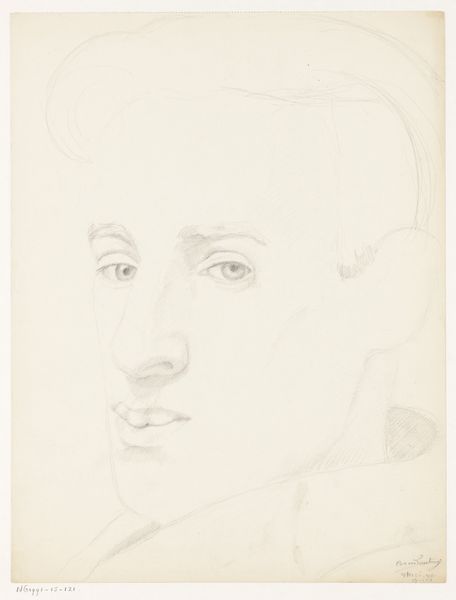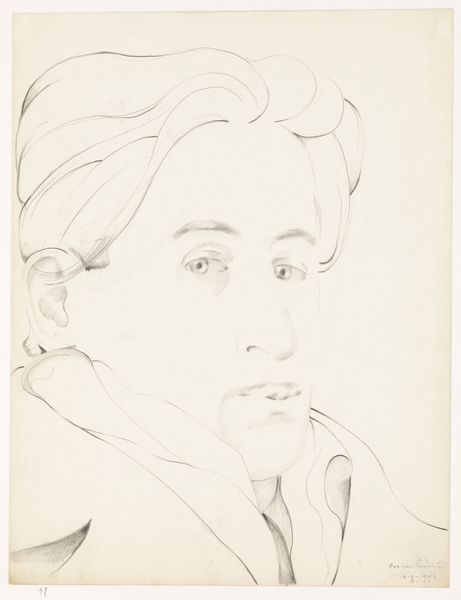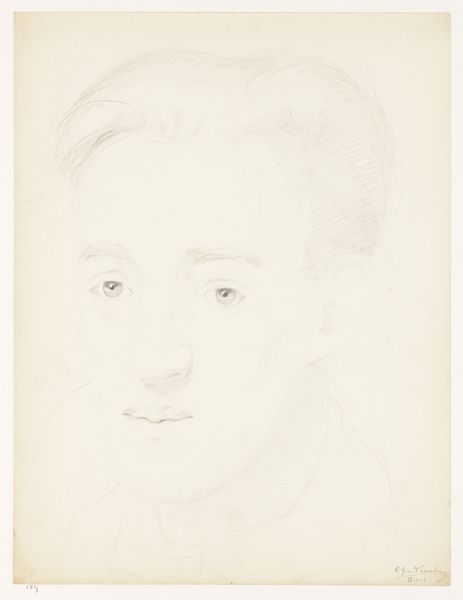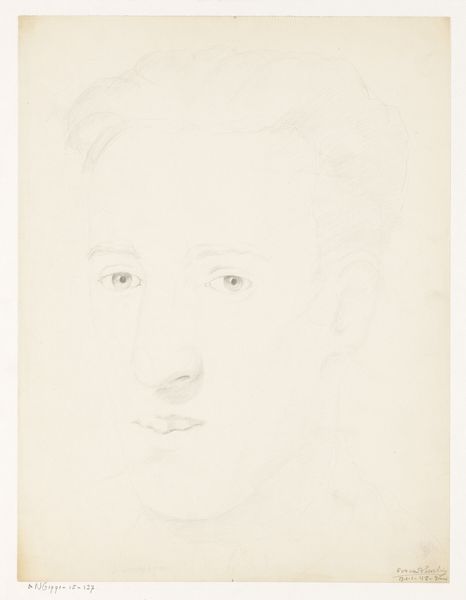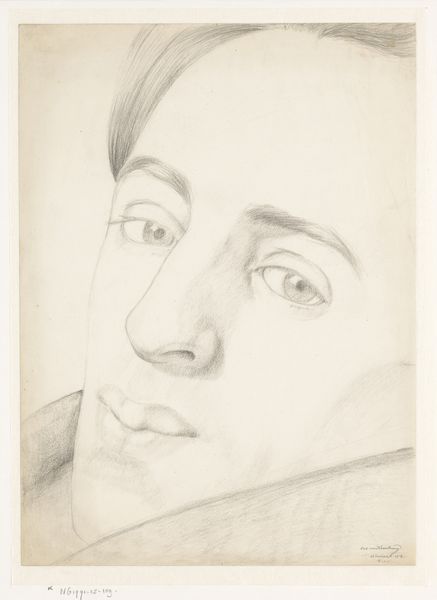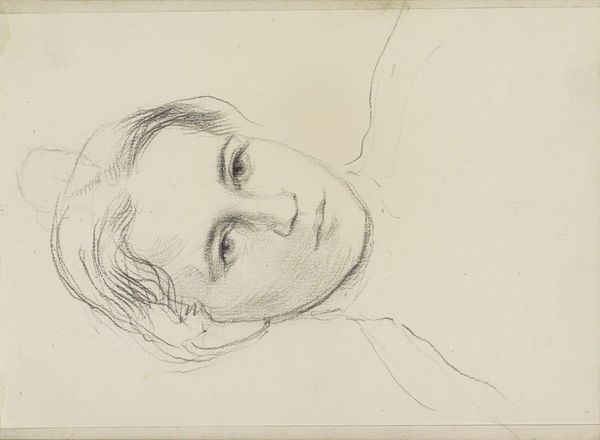
drawing, pencil
#
portrait
#
pencil drawn
#
drawing
#
facial expression drawing
#
light pencil work
#
self-portrait
#
pencil sketch
#
portrait reference
#
pencil drawing
#
pencil
#
animal drawing portrait
#
portrait drawing
#
pencil work
#
fine art portrait
Dimensions: height 35.5 cm, width 27.0 cm
Copyright: Rijks Museum: Open Domain
Cor van Teeseling rendered this self-portrait in pencil around February 14th. The direct gaze, a hallmark of self-portraiture, invites our scrutiny, but it is the relaxed pose and the slight turn of the head that draw us in. Consider how this mirrors the contrapposto found in classical sculptures, a pose that lends a sense of ease and naturalness. In antiquity, contrapposto was used to convey a sense of inner harmony and balance. Here, it might suggest the artist's attempt to capture not just his likeness, but also a sense of his inner self. The act of self-representation has deep roots, evolving from royal and religious figures asserting power to more introspective explorations. This young man, in his self-portrait, participates in a dialogue that spans millennia, each artist adding their own inflection to the enduring human desire for self-understanding. It is the cyclical return and reinterpretation of these symbols that enrich our understanding of the human experience.
Comments
No comments
Be the first to comment and join the conversation on the ultimate creative platform.
